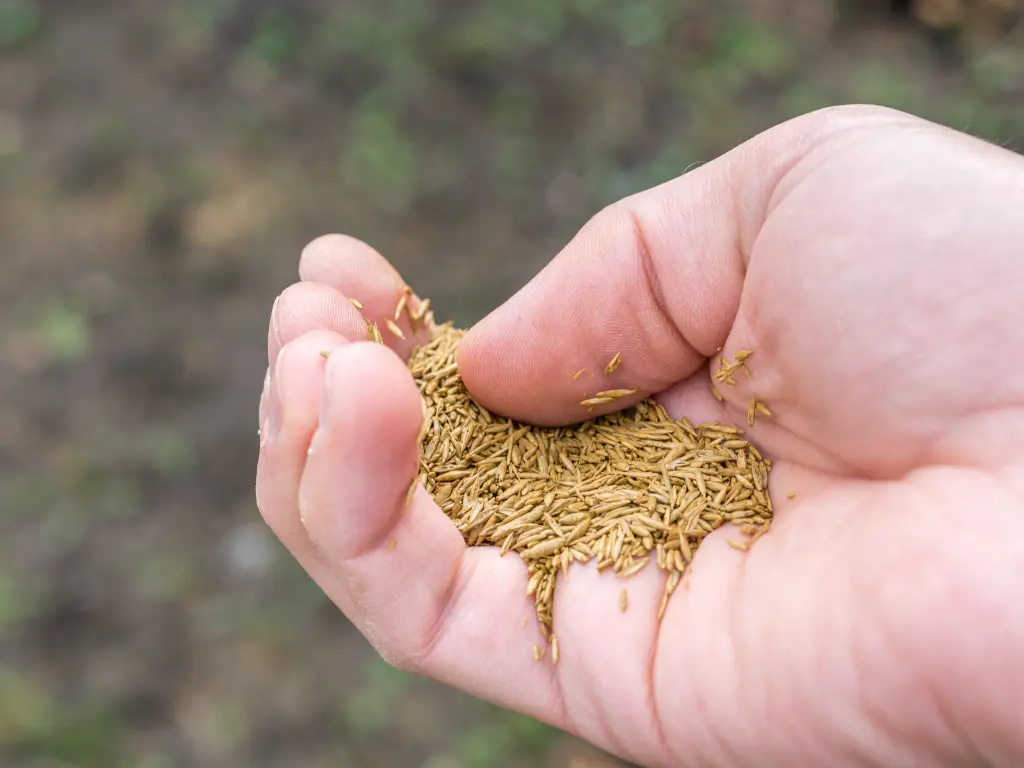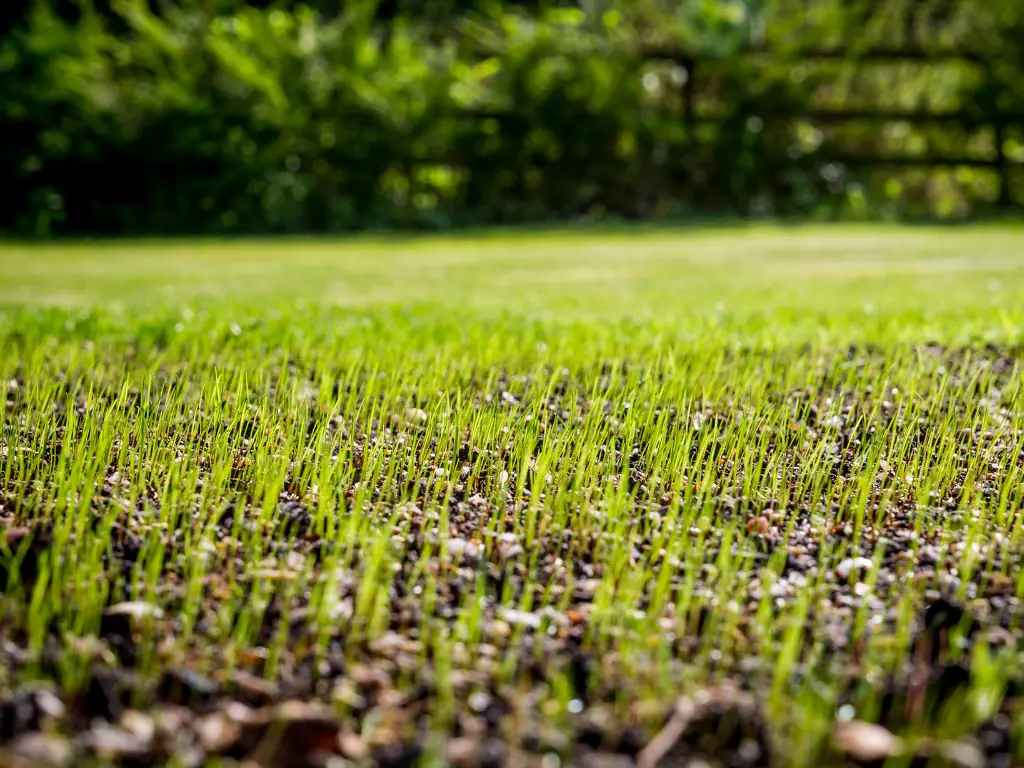Short answer: For most Canadian lawns with cool-season grasses, the prime month is September (late August through September is the sweet spot). Warm soil, cool nights, fewer weeds, and more reliable rainfall make fall seeding the most forgiving and effective window. If you missed it, spring can still work once soil temps stabilize – but fall remains king for fast, dense establishment. Need supplies or region-fit blends? Explore ProZone’s curated grass seed and visit our landscape supplies center for expert guidance and everything you need to seed right the first time.

Best Month Overview (By Region & Grass Type)
Cool-season lawns (the Canadian standard) thrive when seeded in late summer to early fall, with September as the top month across much of the country. That’s when soils are still warm for rapid germination and roots, while nights cool off to reduce stress. Spring becomes your runner-up once soil temperatures reach target ranges, though weed pressure and summer heat raise the difficulty. Warm-season grasses (limited to select microclimates) prefer late spring to early summer once nights are consistently warm. Unsure what you grow? Visit our landscape supplies center for a quick assessment and the right grass seed blend for your site.
Cool-Season Grasses: Best Month
Best month: September (late August–September window). This timing gives you fast germination, strong root development before winter, and a dense green-up next spring. In cooler provinces or higher elevations, start a bit earlier in late August to beat first frost by ~45 days.
Warm-Season Grasses: Best Month
Best month: Late May-June in suitable microclimates, once soil is consistently ~18-21 °C (65-70 °F). These species need sustained warmth and long frost-free periods. In most of Canada, cool-season turf remains the practical choice.
Edge Cases: Dormant Seeding & Late Windows
If you miss fall, consider dormant seeding after soils cool (late fall): seed rests safely over winter and germinates as soon as spring warms. Pushing into October in cold regions risks shallow roots and winterkill—better to wait and do it right.

Why Fall Seeding Wins (and When Spring Works)
Fall combines warm soils (fast germination), cool nights (low stress), and fewer weeds (less competition). That trio accelerates establishment and reduces inputs. Seeded stands root deeply before winter, then surge in spring for early thickness. Spring is fine if you missed fall, but plan for added mowing height and consistent irrigation to protect new turf from summer stress. Unsure which window your site supports? We’re happy to help at the landscape supplies center-bring photos and we’ll tailor a month-by-month plan.
Fall Advantages
Warmer soil than spring, cooler nights than summer, and seasonal rains all line up in your favor. Weed pressure is naturally lower, so turf establishes faster and cleaner. You’ll also irrigate less versus spring. The result: thicker coverage before winter and a stronger spring green-up.
When Spring is a Smart Second Choice
Choose spring when fall is missed or when your project requires spring grading. Seed only after soil stabilizes above target temperatures and avoid waterlogged soils. Expect more weed competition; mow higher to shade them out. Be prepared to spot-overseed after summer.
Month-Specific Pitfalls to Avoid
Late spring-mid summer seeding fights heat and weeds-low success for large areas. Late fall after your frost window risks winter kill. If a big storm is forecast in your chosen month, delay 24-48 hours to protect seed placement.
Soil Temperature Rules: Don’t Seed by Calendar Alone
Seed responds to soil temperature, not wall calendars. Cool-season species prefer ~10-16 °C (50-60 °F); warm-season species prefer ~18-21 °C (65-70 °F). Confirm stability over several mornings before you seed. This simple habit dramatically raises your odds of success and helps you fine-tune the best month for your microclimate. Need a thermometer, starter fertilizer, or topdress? We stock them all at the landscape supplies center.
Target Temperatures
Cool-season: seed when soil sits 10–16 °C for a week. Warm-season: wait for 18-21 °C with warm nights. Colder soils slow enzymes and invite disease; hotter soils dry seedlings.
How to Measure Soil Temperature
Insert a probe at 5-8 cm depth each morning for 5-7 days and average the readings. Seed once your average sits in range. Keep notes – you’ll dial in the best month for your yard over time.

Moisture & Weather Considerations
Light, frequent moisture at the surface speeds germination; heavy downpours can wash seed. If a storm’s coming, roll lightly and consider a thin mulch. Windy weeks dry the top layer faster – add short watering cycles.
Regional Timing Across Canada
“Best month” shifts with frost dates and soil warm-up. Use the guidance below as a starting point, then confirm with your soil thermometer. If you’re unsure, bring your postal code and site details to ProZone’s landscape supplies center-we’ll tailor the timing and recommend the right grass seed mix.
BC Coast
Mild climate allows successful spring or fall seeding. Best months: March-April or September-October, depending on soil temp and rainfall patterns.
Prairies (AB/SK/MB)
Best month: September (late August–mid September window). Shorter fall means act promptly. Consider dormant seeding if you miss it. Alberta note: aim to seed ~45 days before hard frost.
Ontario & Quebec
Best month: September, with late August and early October viable depending on region. Spring seeding is fine but watch spring storms and plan for weed pressure.
Atlantic Canada
Best month: September. Cooler, wetter conditions suit fall seeding, but ensure drainage to prevent washouts. Spring can work; avoid seeding into cold, saturated soils.
Northern & High-Elevation Areas
Short growing seasons favour the earlier side of the fall window (late August). Choose faster-germinating blends and be precise with moisture management.
What to Do Before Your Target Month (Prep Checklist)
Great timing can’t overcome poor prep. Before your chosen month arrives, handle soil testing, grading, and tool/supply lists so you’re ready to go when the thermometer says “green light.” Stock up on seed, starter fertilizer, topdress, and irrigation gear in advance at our landscape supplies center.
Test & Amend Soil
Check pH and nutrients; most cool-season lawns like pH ~6.0-7.0. Amend with lime/sulfur and compost as recommended. Balanced nutrients = faster take and fewer patchy areas.
Fix Grade, Thatch & Compaction
Core-aerate compacted zones. Level dips with a sand/topsoil/compost blend. Rake out thatch and debris so seed contacts soil. Smooth and lightly roll to firm the seedbed.
Choose the Right Seed & Starter
Select a certified blend matched to sun, shade, and traffic. Pair with a quality starter fertilizer and thin topdress. Find region-fit options on our grass seed page.
Aftercare: Watering, Mowing, and Feeding
After you seed in the ideal month, consistency seals the deal. Keep the top 1–2 cm moist (not soggy) until sprout; then taper to deeper, less frequent watering. Mow at ~7.5–9 cm (3–3.5 in) and follow the one-third rule. Apply a follow-up feed 4–6 weeks after germination. For tools, sprinklers, and topdress, stop by the landscape supplies center.
Watering New Seedlings
2–3 short cycles daily beat one long soak, preventing washouts and dry-backs. Morning cycles are safest; avoid evening puddles that promote disease.
First Mow & Ongoing Height
Mow when grass hits ~3 inches; sharp blades prevent tugging seedlings. Keep it taller through the first season to shade soil and suppress weeds.
Follow-Up Feeding
Use a balanced, slow-release fertilizer 4-6 weeks after germination. Avoid heavy nitrogen during heat waves. In fall, a root-building feed sets up winter survival and spring pop.
FAQs
Is September always the best month?
For most cool-season Canadian lawns – yes. But confirm with soil temps. In very cold areas, late August can be safer; in milder zones, early October can still work.
What if I can only seed in spring?
Wait until soil is consistently ≥10 °C, seed, mow high, and water consistently. Expect more weed pressure and plan to spot-overseed after summer.
Can I seed in summer?
We don’t recommend full-lawn summer seeding due to heat and weeds. Reserve it for small patches you can baby with shade and precise watering.
How late can I seed in Alberta?
Target late August-mid September. If you’re inside 45 days of hard frost, consider dormant seeding instead and be ready to protect the surface.
Talk to ProZone
Want a month-by-month plan tailored to your yard? Visit our landscape supplies center or explore region-ready grass seed mixes hand-picked for Canadian conditions. If you’d like personal help choosing the right month, blend, and aftercare schedule for your project, contact us-we’ll get you seeding with confidence and growing a thicker, greener lawn, faster.
